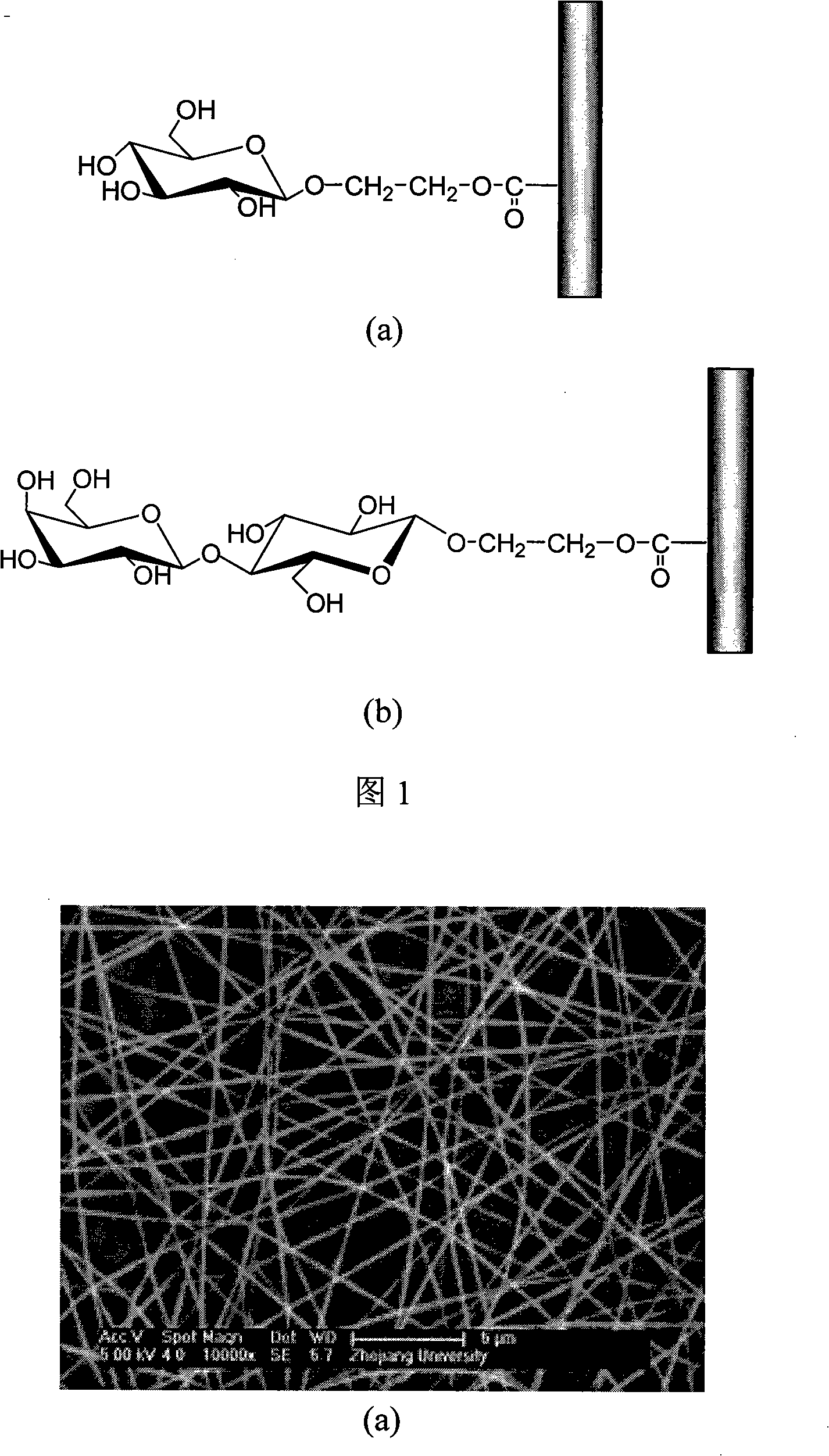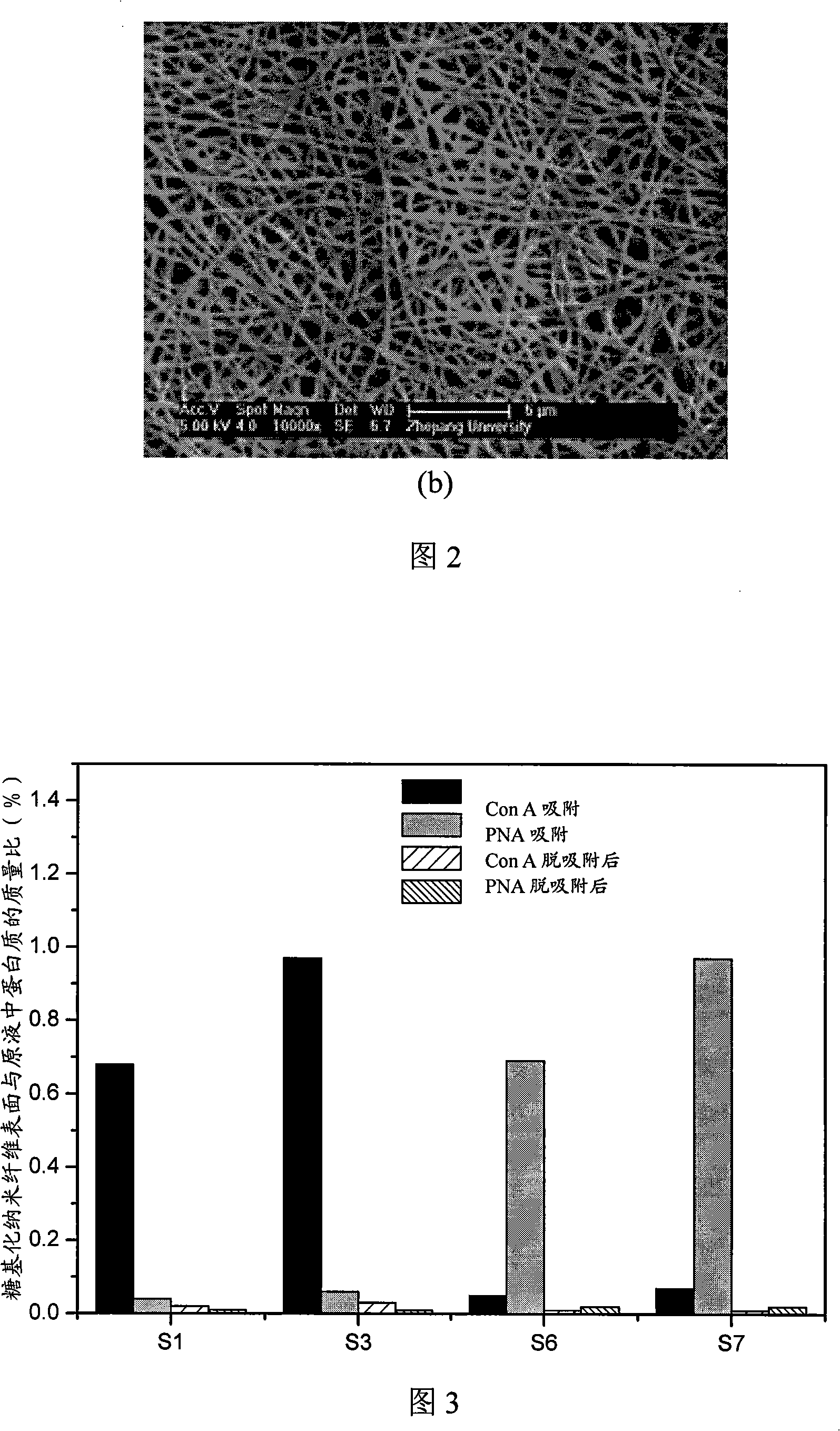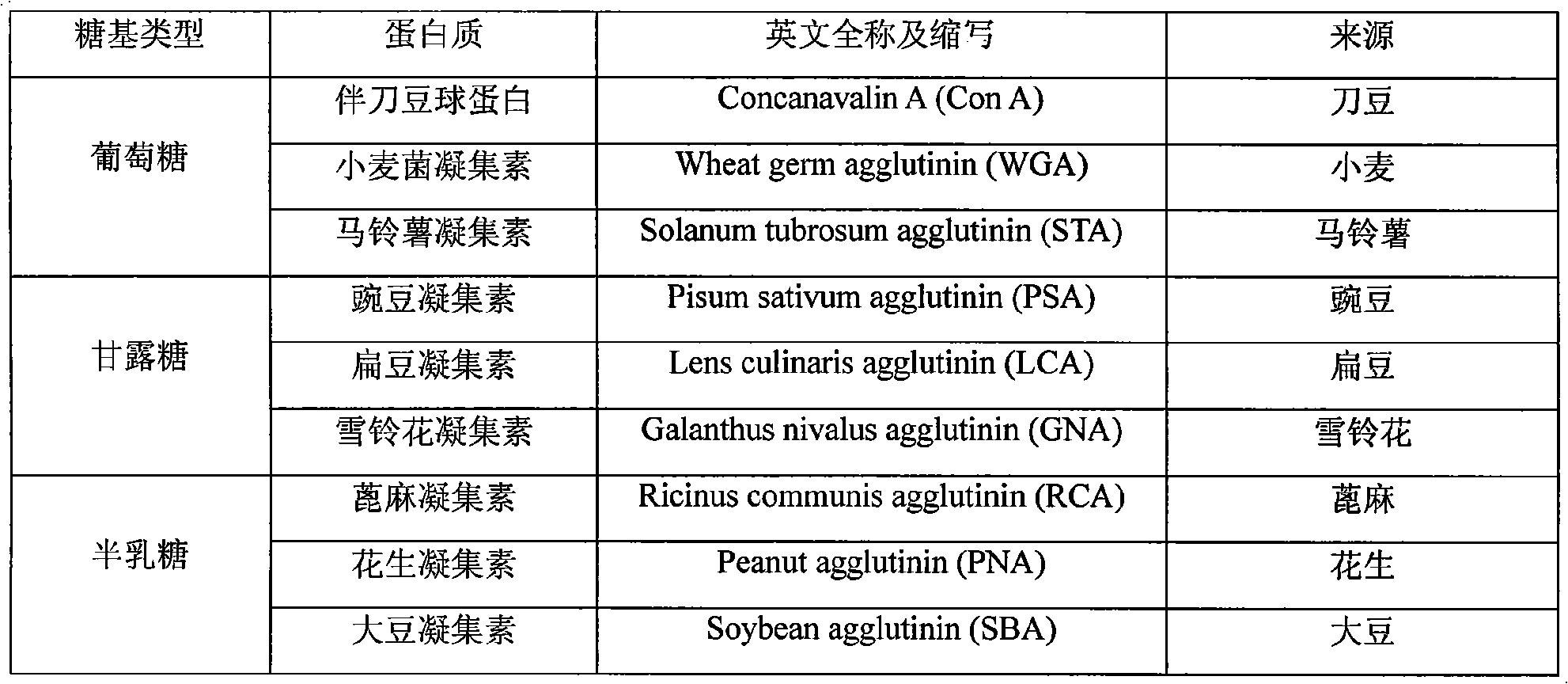Preparation method of glycosylated nano-fibre for identifying proteinicsubstance and applications
A nanofiber and glycosylation technology, which is applied to the preparation method of peptides, chemical instruments and methods, fiber treatment, etc., can solve the problems of restricting wide application and complex synthesis process of unsaturated sugar monomers, and achieve simple and easy preparation. Industrialized production, good stability and durability
- Summary
- Abstract
- Description
- Claims
- Application Information
AI Technical Summary
Problems solved by technology
Method used
Image
Examples
Embodiment 1
[0025] The acrylonitrile / hydroxyethyl methacrylate copolymer (PANCHEMA, viscosity-average molecular weight is 80,000, hydroxyl molar content is 10.1%) that mass fraction is 6% is dissolved in dimethylformamide solvent, and spinning voltage is Electrospinning was carried out at 8 kV, the flow rate of the spinneret solution was 0.5 ml / hour, and the receiving distance was 15 cm, and PANCHEMA nanofibers with a diameter of 152 ± 24 nm were prepared.
[0026] 15 mg of PANCHEMA nanofibers are immersed in 15 milliliters of glucose pentaacetate in dichloromethane solution, the molar ratio of the amount of glucose pentaacetate to the surface hydroxyl of PANCHEMA nanofibers is 1, and boron trifluoride ether is added under nitrogen protection Complex compound, the molar ratio of its adding amount and used sugar monomer is 3. , shaking in an ice-water bath for 2 hours, then shaking and reacting at room temperature for 20 hours, washing and drying with acetone several times after the reacti...
Embodiment 2
[0028] The mass fraction is 6% PANCHEMA (viscosity-average molecular weight is 150,000, carboxyl molar content is 10.1%) is dissolved in the dimethylformamide solvent, is 15 kilovolts at spinning voltage, spinneret solution flow rate is 1.0 milliliters Electrospinning was carried out under the condition that the receiving distance was 15 centimeters per hour, and PANCHEMA nanofibers with a diameter of 367±28 nanometers were prepared.
[0029] 15 mg of PANCHEMA nanofibers were immersed in 15 milliliters of glucose pentaacetate in dichloromethane solution, the molar ratio of the amount of glucose pentaacetate to the surface hydroxyl of PANCHEMA nanofibers was 30, and boron trifluoride ether was added under nitrogen protection Complex compound, the molar ratio of its adding amount and used sugar monomer is 5. Shaking in an ice-water bath for 2 hours, then shaking and reacting at room temperature for 20 hours, washing and drying with acetone several times after the reaction, to ob...
Embodiment 3
[0031] The mass fraction is 4% PANCHEMA (viscosity-average molecular weight is 150,000, carboxyl molar content is 10.1%) is dissolved in the dimethyl sulfoxide solvent, is 15 kilovolts at spinning voltage, spinneret solution flow rate is 1.0 milliliters Electrospinning was carried out under the conditions of receiving distance of 8 cm per hour and a receiving distance of 8 cm to prepare PANCHEMA nanofibers with a diameter of 205 ± 26 nanometers.
[0032] 15 mg of PANCHEMA nanofibers were immersed in 15 milliliters of glucose pentaacetate in dichloromethane solution, the molar ratio of the amount of glucose pentaacetate to the surface hydroxyl of PANCHEMA nanofibers was 30, and boron trifluoride ether was added under nitrogen protection Complex compound, the molar ratio of its adding amount and used sugar monomer is 5. Shaking in an ice-water bath for 2 hours, then shaking and reacting at room temperature for 20 hours, washing and drying with acetone several times after the rea...
PUM
| Property | Measurement | Unit |
|---|---|---|
| diameter | aaaaa | aaaaa |
| diameter | aaaaa | aaaaa |
| diameter | aaaaa | aaaaa |
Abstract
Description
Claims
Application Information
 Login to View More
Login to View More - R&D
- Intellectual Property
- Life Sciences
- Materials
- Tech Scout
- Unparalleled Data Quality
- Higher Quality Content
- 60% Fewer Hallucinations
Browse by: Latest US Patents, China's latest patents, Technical Efficacy Thesaurus, Application Domain, Technology Topic, Popular Technical Reports.
© 2025 PatSnap. All rights reserved.Legal|Privacy policy|Modern Slavery Act Transparency Statement|Sitemap|About US| Contact US: help@patsnap.com



